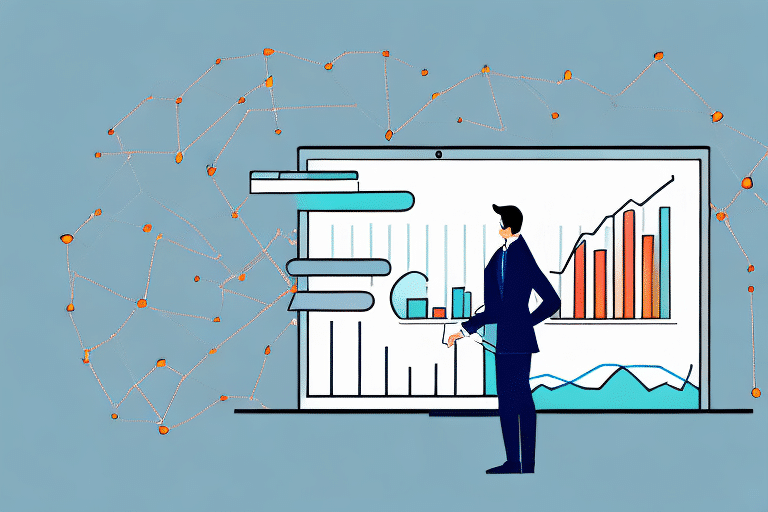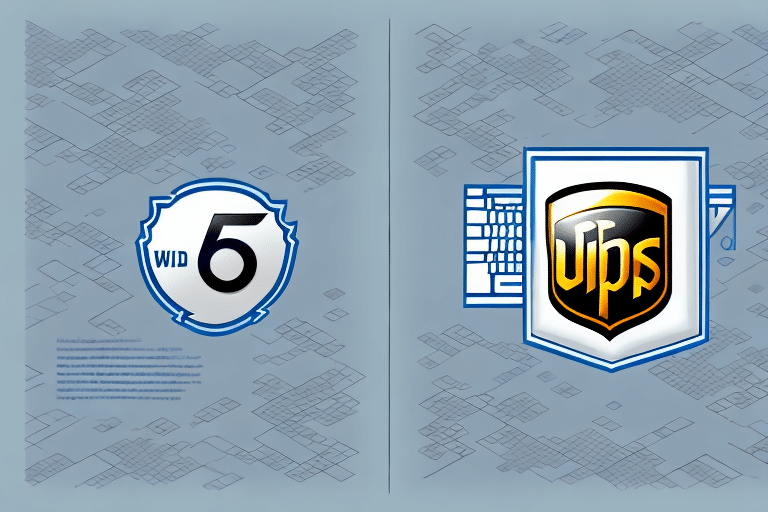What Is Customer Retention and How Can It Help Your Business?
As a business owner, you've likely heard the term "customer retention" being thrown around quite a bit. Simply put, customer retention refers to the ability of a business to keep its existing customers over a certain period of time. This is achieved through a variety of strategies and tactics aimed at improving the overall customer experience and fostering loyalty. In this article, we'll take a closer look at why customer retention is so important, some of the benefits associated with focusing on retention, and strategies for improving your retention rate.
Why Customer Retention Matters More Than Customer Acquisition
While acquiring new customers is, of course, important, it's often the case that businesses tend to overlook the importance of retaining their existing customers. However, research has consistently shown that the cost of acquiring a new customer can be up to five times greater than retaining an existing one. Furthermore, existing customers are more likely to spend more money and refer others to your business. By focusing on retention, you can reduce your marketing costs and increase your overall revenue.
One of the key benefits of customer retention is that it helps to build a loyal customer base. Loyal customers are more likely to forgive occasional mistakes or issues with your products or services, and they are also more likely to provide valuable feedback that can help you improve your business. By building a strong relationship with your customers, you can create a sense of trust and loyalty that will keep them coming back to your business time and time again.
Another important factor to consider is that customer retention can help to improve your brand reputation. When customers have a positive experience with your business, they are more likely to share their experience with others, either through word of mouth or online reviews. This can help to attract new customers to your business, without the need for expensive marketing campaigns. According to a study by Bain & Company, loyal customers can generate up to 67% more revenue than non-loyal customers.
The Benefits of Focusing on Customer Retention
- Greater Customer Loyalty: Retained customers are more likely to remain loyal and continue purchasing from your business.
- Increased Revenue Per Customer: Loyal customers tend to spend more over time, boosting your revenue.
- Reduced Marketing Costs: Retaining customers is generally less expensive than acquiring new ones.
- Positive Word-of-Mouth: Satisfied customers are likely to recommend your business to others, enhancing your reputation.
Improving your customer retention rate can also help you identify areas for improvement within your business. By listening to feedback from your loyal customers, you can gain valuable insights into what is working well and what needs to be improved. This can help you make strategic decisions about product development, customer service, and marketing efforts, ultimately leading to a more successful and profitable business.
Understanding the Stages of Customer Retention
Effective customer retention strategies involve understanding the various stages that customers go through as they interact with your business. Generally speaking, these stages include:
- Awareness: Customers become aware of your brand through marketing efforts or referrals.
- Engagement: Customers interact with your brand, such as visiting your website or engaging on social media.
- Conversion: Customers make a purchase or take a desired action.
- Retention: Ongoing efforts to retain the customer and encourage repeat business.
At each stage, it's important to provide an exceptional customer experience that encourages them to move to the next stage. This might involve providing informative content during the awareness stage, offering personalized recommendations during the engagement stage, or providing incentives for repeat purchases during the retention stage.
It's important to note that not all customers will move through these stages at the same pace or in the same order. Some customers may skip the awareness stage altogether if they are referred to your business by a friend or family member. Others may take longer to convert because they need more time to research and compare options. By understanding the different paths that customers may take, you can tailor your retention strategies to meet their specific needs and preferences.
How to Calculate Your Customer Retention Rate
If you're looking to improve your customer retention rate, it's important to first determine where you're currently at. One of the simplest ways to do this is by calculating your Customer Retention Rate (CRR). To do this, you'll need to know the number of customers you had at the beginning of a given time period, the number of customers you had at the end of that period, and the number of new customers acquired during that period.
Once you have these figures, you can use the following formula to calculate your CRR:
CRR = ((E - N) / S) x 100
Where:
- E: Number of customers at the end of the period
- N: Number of new customers acquired during the period
- S: Number of customers at the start of the period
A higher CRR indicates a greater ability to retain customers over time. According to a report by Harvard Business Review, increasing customer retention rates by just 5% can increase profits by 25% to 95%.
Strategies for Improving Your Customer Retention Rate
So, what are some effective strategies for improving your customer retention rate? Here are several approaches:
- Prioritize Customer Service and Support: Providing exceptional support shows that you care about your customers' needs and are committed to helping them.
- Offer Incentives and Rewards: Encourage repeat business through discounts, loyalty programs, or free gifts for returning customers.
- Leverage Personalization: Use data analytics to offer more targeted and relevant offers to your customers.
- Enhance the Customer Experience: Ensure that every interaction with your business is positive and seamless.
- Regularly Gather and Act on Feedback: Use surveys and feedback forms to understand customer needs and make necessary improvements.
By implementing these strategies, you can improve the overall customer experience and keep them coming back for more.
The Role of Personalization in Customer Retention
Personalization is a key component of effective customer retention strategies. By tailoring your approach to each individual customer, you can provide a more customized experience that meets their specific needs and preferences. This might involve:
- Offering personalized product recommendations
- Providing targeted promotions based on past behavior
- Sending personalized email messages that address their unique concerns
According to a study by Salesforce, 76% of consumers expect companies to understand their needs and expectations. By leveraging personalization, you can foster stronger relationships with your customers and encourage them to remain loyal to your brand.
Furthermore, personalization can also help to increase customer satisfaction and reduce churn rates. When customers feel that a brand understands their needs and preferences, they are more likely to continue doing business with that brand. Studies have shown that personalized experiences can lead to higher customer satisfaction rates and increased customer lifetime value. By investing in personalization, you can not only retain your existing customers but also attract new ones through positive word-of-mouth and referrals.
How to Use Data Analytics to Enhance Customer Retention
Data analytics can play a critical role in improving customer retention. By analyzing customer data such as purchase history, browsing behavior, and demographic information, you can gain insights into their preferences, needs, and pain points. This information can then be used to create more targeted marketing campaigns, personalized offers, and other strategies aimed at improving their overall experience.
Here are ways to utilize data analytics for customer retention:
- Identify Patterns in Customer Behavior: Analyze data on customer interactions with your website or app to identify common paths that lead to conversions or drop-offs. Use this information to optimize your digital platforms and improve the customer experience.
- Address Customer Pain Points: Examine customer feedback and support interactions to identify common issues. Addressing these can improve customer satisfaction and reduce churn.
- Predictive Analytics: Use predictive models to identify customers who are at risk of leaving and proactively engage them with targeted offers or support.
According to a Forbes article, businesses that effectively leverage data analytics see a 15-20% increase in customer retention rates.
Common Mistakes That Can Hurt Your Customer Retention Efforts
While striving to improve customer retention, it's important to avoid common pitfalls that can undermine your efforts:
- Failing to Prioritize Customer Service and Support: Without providing timely and effective support, your customers may become frustrated and seek out alternatives.
- Ignoring Customer Feedback: Not listening to your customers can lead to unmet needs and decreased satisfaction.
- Neglecting Personalization: A one-size-fits-all approach can make customers feel undervalued and less likely to stay loyal.
- Not Offering Incentives for Loyalty: Customers want to feel appreciated. Failing to offer rewards or discounts can diminish loyalty.
- Stagnation: Not keeping up with industry trends or failing to innovate can lead to a decline in customer retention.
By avoiding these mistakes and prioritizing the customer experience, you can improve your retention rate and drive long-term growth for your business.
Building a Successful Customer Loyalty Program
A successful customer retention strategy often involves building a strong customer loyalty program. A loyalty program should provide additional value to your customers, such as:
- Exclusive discounts
- Rewards for purchases
- Other incentives like free gifts or early access to new products
By creating a program that encourages repeat business and fosters loyalty, you can improve customer satisfaction and retention. However, it's important to ensure that your loyalty program is well-designed and easy to use. Consider leveraging data and customer feedback to refine your program over time and ensure that it's meeting the needs of your customers.
According to a report by Forbes, key elements of a successful loyalty program include:
- Simple and clear rewards structure
- Personalized rewards based on customer preferences
- Easy enrollment and participation
- Regular communication and updates about the program
Overall, customer retention is a critical component of any successful business strategy. By prioritizing customer service, personalization, and data-driven decision-making, you can improve your retention rate and drive long-term growth for your business.
Personalized Rewards and Incentives
One effective way to build a successful customer loyalty program is to offer personalized rewards and incentives. By tailoring rewards to individual customers based on their purchase history and preferences, you can create a more engaging and effective loyalty program. Additionally, consider offering non-monetary rewards, such as early access to new products or exclusive experiences, to further incentivize customer loyalty.
Clear Communication and Transparency
Another important aspect of a successful loyalty program is clear communication and transparency. Make sure your customers understand the benefits of the program and how to earn and redeem rewards. Provide regular updates and reminders about the program to keep it top of mind for your customers.
Conclusion
Customer retention is a critical component of any successful business strategy. By prioritizing customer service, personalization, and data-driven decision-making, you can improve your retention rate and drive long-term growth for your business. Implementing effective strategies and avoiding common mistakes will help you build a loyal customer base that supports your business for years to come.




















